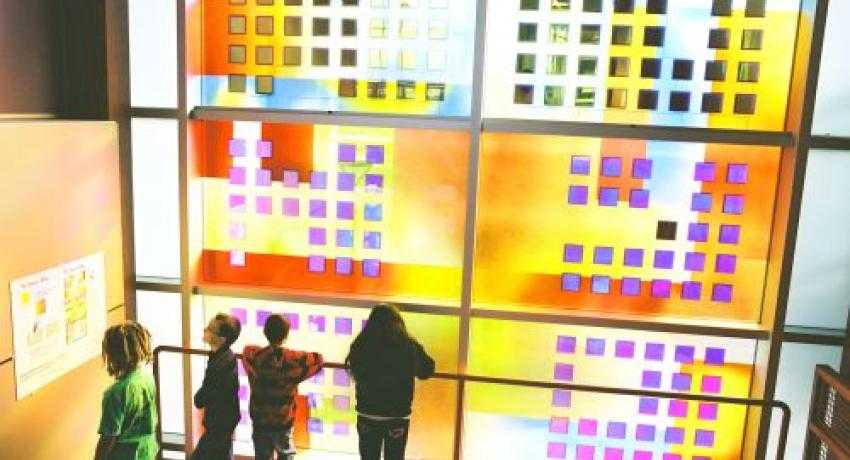Glass artist incorporating solar into stained glass
Solar panels are beautiful in their own way, but when a building is architecturally significant, it doesn’t work to slap a few panels on the roof and call it green. As demand for architecturally appealing solar increases, artists like Sarah Hall are gaining a new degree of notoriety.
Hall is a renowned glass artist best known for her beautiful stained glass pieces in iconic churches and prominent buildings throughout the world. But in recent years, her name is circulating in new architectural realms.
If you want solar integrated into your building design, but you also want a show-stopping one-of-a-kind piece of original glass art to distinguish your building, Hall has proven herself in that arena.
From the Cathedral of the Holy Family in Saskatoon, Canada to the Grass Valley Elementary School in Camas, Wash. and the Harbourfront Centre Theatre in Toronto, Hall has created some truly amazing, beautiful and artistic pieces incorporating solar.
While solar photovoltaics only account for 5 percent of her glass projects, she is probably the best-known glass artists for incorporating solar into her works.
“There has been a lot of interest from solar energy companies who want to customize their work and look more attractive,” Hall said in an email interview. “There is also interest from architects and designers. I think my solar projects have greater impact on the solar and architectural world than on the field of stained glass.”
And that’s how it should be, she adds.
“My interest as an artist is to be an advocate for the values I hold,” Hall said. “I have always been interested to create work that leads us forward – spiritually and environmentally.”
Hall employs a lot of the Old World stained glass techniques in her work, but often has a contemporary approach to stained glass that made her a prime candidate for incorporating current technology into her work.
Incorporating solar cells into window glass isn’t as simple as sprinkling them around.
“In the short time I have worked with solar technology, the method for integrating the cells into the art glass has evolved,” Hall said. But there is always a need for artistic context around the cells.”
When working with solar, Hall said she designed the glass with the solar cells in mind and she designs graphic elements and patterns for the cells. Then she sends it to the solar engineer to technically incorporate the solar into the piece. Sometimes the wiring can be so understated it’s almost invisible. Other times, the wiring becomes part of the design.
“Solar projects have brought a definite rigor to the design process by having to incorporate rigid graphic elements,” Hall said.
Of course, solar technology is changing and advancing at a rapid rate, which constantly gives Hall new challenges and advantages.
“The new nanotechnology I am designing for is much more open and fluid and will bring further change to my design work.”




